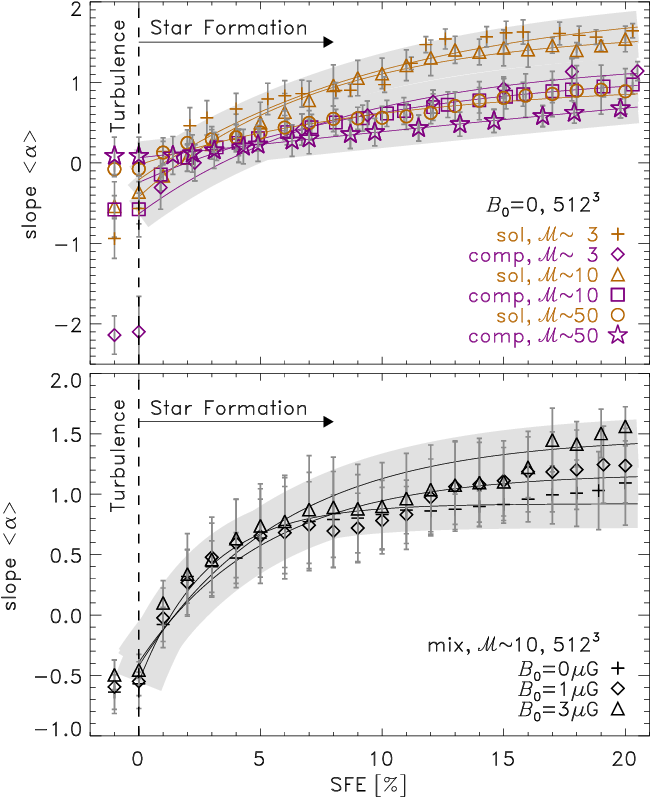On the Star Formation Efficiency of Turbulent Magnetized Clouds
Federrath, C. & Klessen, R. S., 2013, The Astrophysical Journal, 763, 51 [ ADS link ] [ PDF ]
Abstract
We study the star formation efficiency (SFE) in simulations and observations of turbulent, magnetized, molecular clouds. We find that the volumetric and column density probability distributions (PDFs) of our simulations with solenoidal, mixed, and compressive forcing of turbulence, sonic Mach numbers of 3-50, and magnetic fields in the super- to the trans-Alfvenic regime, all develop power-law tails of flattening slope with increasing SFE. The high-density tails of the PDFs are consistent with equivalent radial density profiles, rho ~ r^(-kappa) with kappa ~ 1.5-2.5, in agreement with observations. Studying velocity-size scalings, we find that all the simulations are consistent with the observed v ~ l^(1/2) scaling of supersonic turbulence, and seem to approach Kolmogorov turbulence with v ~ l^(1/3) below the sonic scale. The velocity-size scaling is, however, largely independent of the SFE. In contrast, the density-size and column density-size scalings are highly sensitive to star formation. We find that the power-law slope alpha of the density power spectrum, P(rho,k) ~ k^alpha, or equivalently the Delta-variance spectrum of column density, DV(Sigma,l) ~ l^(-alpha), switches sign from alpha < 0 for SFE ~ 0 to alpha > 0 when star formation proceeds (SFE > 0). We provide a relation to compute the SFE from a measurement of alpha. Studying the literature, we find values ranging from alpha = -1.6 to +1.6 in observations covering scales from the large-scale atomic medium, over cold molecular clouds, down to dense star-forming cores. From those alpha values, we infer SFEs and find good agreement with independent measurements based on young stellar object (YSO) counts, where available. Our SFE-alpha relation provides an independent estimate of the SFE based on the column density map of a cloud alone, without requiring a priori knowledge of star-formation activity or YSO counts.
A new SFE relation
We develop a new method to infer the star formation efficiency (SFE) in molecular clouds. Observers can use the calibrated relations shown in the figure below to compute the SFE simply from a measurement of the spectral slope α of the density power spectrum P(k) ~ k^α in a column density map of the cloud (see the paper for details). This yields an estimate of the SFE without a priori knowledge about star formation activity in the observed region, i.e., it does not require special observations to detect and count young stellar objects, which used to be the only way of measuring the SFE in a cloud. Our new method provides an independent estimate, which can be obtained with relatively coarse resolution maps of the gas or dust column density alone.


 Home
Home